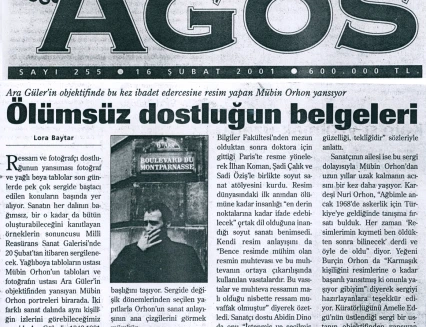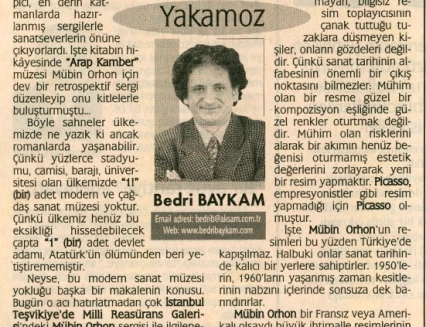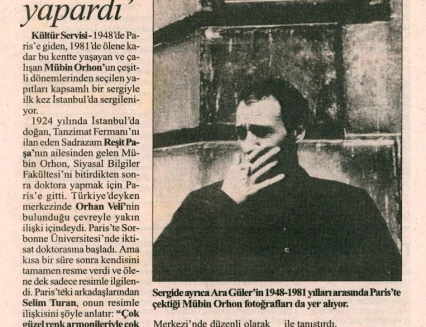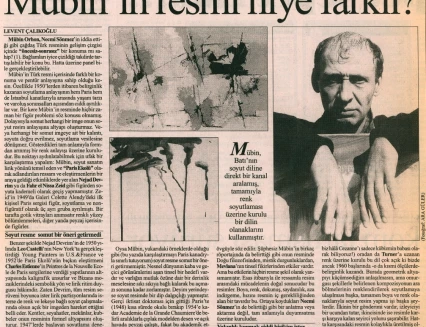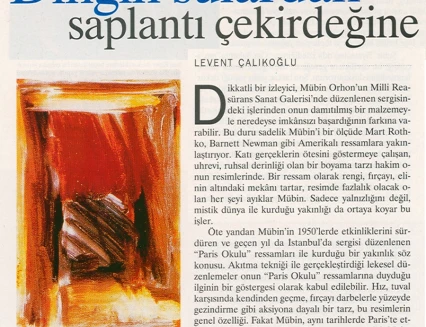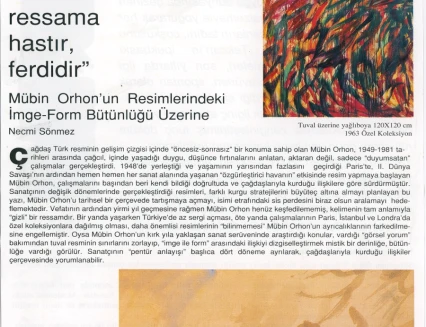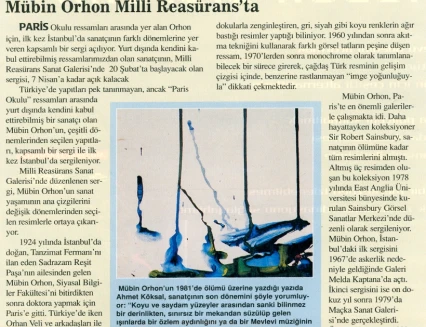Selected Works from Various Periods of Mübin Orhon and Mübin Orhon Through Ara Güler's Lens
Thirty black and white photographs taken by Ara Güler and Mübin Orhon in Paris between 1948 and 1981 are also included in the exhibition.
The exhibition can be viewed between February 20 and April 7, 2001.
Abidin Dino, in an article he wrote after Mübin Orhon’s death, remembered Mübin Orhon, who was still not well known in Turkey but had managed to gain acceptance among the “Paris School” painters and whose works were in collections abroad, by saying, “First of all, there are the paintings he made, and when we look at these paintings, what we see is the sincerity, enthusiasm, color movement, beauty and uniqueness of suffering. There is no other ancestor of this kind in the history of Turkish painting.”
According to Abidin Dino, Mübin Orhon, who “lived a desired and chosen loneliness,” selected works from various periods are being exhibited in Istanbul for the first time in a comprehensive exhibition.
Born in Istanbul in 1924, Mübin Orhon, who came from the family of Grand Vizier Reşit Pasha who declared the Tanzimat Edict, went to Paris to do his doctorate after graduating from the Faculty of Political Sciences. While in Turkey, Mübin Orhon had close relations with the circle centered on Orhan Veli. He started his doctorate in economics at the Sorbonne University in Paris. But soon after, he devoted himself entirely to painting and was only interested in painting until his death.
Mübin Orhon explained his understanding of painting as follows: “In my opinion, what is important in painting is the content of the painting and the means used to reveal this content. The painter has been successful to the extent that these means and content belong to the painter… It is wrong to paint with the idea of making a new painting. The issue is that the struggle between the painter and the painting is dragged into a genuine creation… painting is specific to the painter, it is individual. Its roots are the inner life, society, knowledge, environment, culture, life and humanity of the painter.”
Although Mübin Orhon initially made pattern and figure studies for educational purposes, although not regularly, from the moment he entered the world of painting until the end, he adopted abstract art, which he believed was the common language that could “express humanity to its deepest points.” In his article in the exhibition catalogue, Necmi Sönmez divides Mübin Orhon’s art into the periods of Geometric (1949-1955), Spotty Abstraction (1956-1960), Poetic-Expressionist Abstraction (1961-1970) and Monochrome (1971-1981). He states that the artist, who attracted attention with his passion for geometry in the debate between “geometric-spotty” abstraction in the Paris art environment between 1948-1950, later made paintings that emphasized spotty values, enriched the canvas surface with different textures, and were dominated by dark colors such as gray and black. He explains that the artist, who pursued different visual tastes using the flow technique after 1960, entered a period that can be defined as monochrome after the 1970s, and that he produced togetherness that could only be resolved with the empathy of “seeing eyes” by kneading and shaping his painting on the threshold of different searches without making it an element of his personal life with the “density of image” that is unparalleled in the development line of contemporary Turkish painting.
